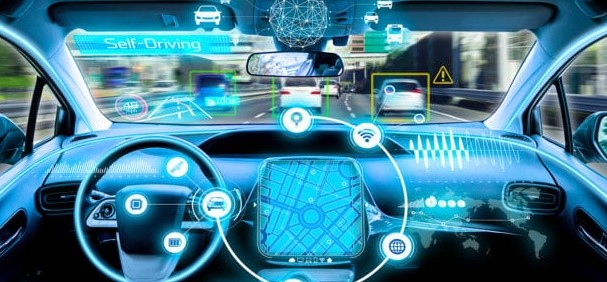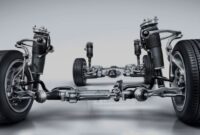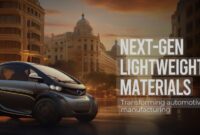The Internet of Vehicles (IoV): Connecting Cars to the Digital World
Introduction
The digital transformation of the automotive industry has advanced beyond onboard electronics and infotainment systems to a larger, more integrated ecosystem known as the Internet of Vehicles (IoV). A natural evolution of the Internet of Things (IoT), IoV connects vehicles to networks, infrastructures, cloud platforms, and even each other, creating a seamless web of data exchange and communication.
The IoV paradigm is transforming cars from isolated machines into intelligent, communicative entities capable of making decisions, anticipating issues, enhancing driver safety, and participating in a smart transportation ecosystem. With connected cars projected to make up over 95% of all new vehicles sold globally by the early 2030s, understanding IoV is crucial to grasping the future of mobility.
This article delves deeply into the concept of the Internet of Vehicles, its components, benefits, underlying technologies, applications, challenges, and its role in shaping the digital mobility of tomorrow.
1. Defining the Internet of Vehicles (IoV)
1.1 What is IoV?
The Internet of Vehicles is a networked system where vehicles communicate with each other (V2V), with infrastructure (V2I), pedestrians (V2P), cloud servers (V2C), and other devices (V2X – Vehicle-to-Everything). IoV goes beyond simple connectivity; it leverages real-time data, cloud computing, and AI to optimize transportation systems and enhance vehicle intelligence.
1.2 The Evolution from IoT to IoV
While IoT connects everyday objects to the internet, IoV applies this concept to vehicles, adding mobility, speed, and safety into the equation. The transition can be seen as:
• IoT → Connected Vehicles → IoV → Intelligent Transportation Systems (ITS)
The ultimate goal of IoV is to integrate vehicles into a smart mobility ecosystem that is safer, more efficient, and environmentally sustainable.
2. Core Components of IoV
IoV systems are composed of both hardware and software infrastructure that enable comprehensive connectivity.
2.1 Communication Protocols
• V2V (Vehicle-to-Vehicle): Shares speed, location, and direction data to prevent collisions.
• V2I (Vehicle-to-Infrastructure): Communicates with traffic lights, road signs, and toll booths for smoother traffic flow.
• V2P (Vehicle-to-Pedestrian): Alerts drivers of pedestrians in dangerous zones.
• V2N (Vehicle-to-Network): Connects vehicles to cloud-based services.
• V2C (Vehicle-to-Cloud): Sends and receives data for remote diagnostics, software updates, and infotainment.
2.2 Onboard Units (OBUs)
These are embedded computers in vehicles equipped with:
• GPS
• Cellular modules (4G/5G)
• Wi-Fi/Bluetooth
• Dedicated Short-Range Communications (DSRC) or C-V2X chips
2.3 Roadside Units (RSUs)
Fixed infrastructure elements, like smart traffic lights and parking systems, that interact with vehicles and provide traffic management data.
2.4 Cloud and Edge Computing Platforms
IoV heavily relies on:
• Cloud computing for data storage and complex analytics.
• Edge computing for local, real-time decision-making with minimal latency.
3. Key Technologies Enabling IoV
Several advanced technologies power the Internet of Vehicles:
3.1 5G Networks
5G is critical for:
• Ultra-low latency communication.
• High data throughput.
• Reliable connectivity for autonomous driving.
3.2 Artificial Intelligence (AI)
AI is used for:
• Pattern recognition in driving behavior.
• Real-time decision-making in autonomous systems.
• Predictive maintenance and personalized services.
3.3 Big Data Analytics
Connected cars generate terabytes of data daily. Analytics help:
• Monitor traffic flow.
• Detect driver fatigue or risky behaviors.
• Personalize infotainment and routes.
3.4 Blockchain
Used to secure vehicle-to-vehicle communications, validate data integrity, and manage transactions like toll payments or EV charging.
3.5 Sensor Fusion and ADAS
• Radar, LiDAR, cameras, and ultrasonic sensors support data collection.
• These sensors feed IoV systems with accurate environmental information.
4. Applications and Use Cases
The Internet of Vehicles enables a broad range of applications, benefiting drivers, cities, and manufacturers.
4.1 Traffic Management
• Smart traffic lights adapt in real-time.
• Dynamic rerouting based on congestion or accidents.
• Reduced fuel consumption and emissions.
4.2 Safety Enhancements
• Early warning systems for collisions or lane departure.
• Emergency vehicle prioritization and alerts.
• Pedestrian and cyclist recognition in poor visibility.
4.3 Autonomous Driving
IoV forms the communication backbone for autonomous vehicles:
• Coordinated behavior among multiple vehicles.
• Real-time updates on road conditions.
• HD map synchronization and cloud-based AI assistance.
4.4 Fleet Management
For commercial applications:
• Real-time vehicle tracking.
• Driver performance monitoring.
• Predictive maintenance and fuel optimization.
4.5 Smart Parking
• Automatic parking slot detection and reservations.
• In-app payment for parking.
• Navigation directly to available spaces.
4.6 Infotainment and Personalization
• On-the-go streaming and gaming.
• Personalized content recommendations.
• Voice assistants integrated with daily schedules.
5. Benefits of IoV
The Internet of Vehicles offers a multitude of advantages across different stakeholders.
5.1 For Drivers and Passengers
• Improved road safety and situational awareness.
• Enhanced user experience and convenience.
• Faster access to emergency assistance.
5.2 For Manufacturers and OEMs
• Better product insights from usage data.
• Continuous software updates via OTA.
• Creation of new revenue models through subscriptions.
5.3 For Governments and Cities
• Smarter urban planning.
• Reduced traffic congestion and emissions.
• Real-time monitoring of infrastructure usage.
5.4 For the Environment
• Lower greenhouse gas emissions due to efficient routing.
• Promotion of shared mobility and EV adoption.
6. IoV and Smart Cities
IoV is a foundational element in building smart cities, which rely on integrated digital networks to improve quality of life.
6.1 Traffic Optimization
• IoV data feeds urban traffic control centers.
• AI algorithms predict and manage rush-hour congestion.
6.2 Environmental Monitoring
Connected vehicles can detect and relay air quality data, helping governments enforce emissions standards and deploy mitigation strategies.
6.3 Public Transportation Integration
IoV supports seamless mobility by integrating buses, taxis, rail, and shared bikes through real-time updates and single-access platforms.
7. Cybersecurity and Data Privacy
Connectivity introduces vulnerabilities that must be addressed.
7.1 Threats
• Remote hacking of vehicles.
• Denial-of-service (DoS) attacks on networks.
• Data theft and identity fraud.
7.2 Protective Measures
• End-to-end encryption and secure authentication.
• Firewalls between infotainment and critical vehicle systems.
• Blockchain for trust and traceability.
7.3 Regulatory Compliance
• GDPR in Europe and CCPA in California require user data transparency.
• OEMs must implement privacy-by-design in vehicle architectures.
8. Global Trends and Industry Players
8.1 Leading Markets
• China: Rapid government support for IoV infrastructure and connected EVs.
• Europe: Focus on safety, interoperability, and regulations.
• United States: Strong in autonomous vehicle startups and cloud platforms.
8.2 Major Companies Involved
• Automakers: Tesla, BMW, Ford, Toyota, Volkswagen.
• Tech Firms: Qualcomm, Intel, NVIDIA, Google, Amazon Web Services (AWS).
• Telecoms: Verizon, Huawei, Ericsson, Nokia.
• Startups: Nuro, Zoox, Mobileye, and Aurora.
9. Challenges and Limitations
Despite its promise, IoV faces several obstacles:
9.1 Infrastructure Gaps
• Limited 5G coverage in rural areas.
• Need for smart road installations and maintenance.
9.2 Standardization Issues
• Lack of global V2X communication standards.
• Fragmentation among automakers and tech providers.
9.3 Cost and Complexity
• High costs of implementation and vehicle retrofitting.
• Complexity in system integration and maintenance.
9.4 Public Trust
• Consumer concerns over surveillance and data misuse.
• Reluctance to adopt autonomous or semi-autonomous features.
10. The Future of IoV
The evolution of the Internet of Vehicles is set to accelerate in the coming years.
10.1 Integration with Autonomous Vehicles
IoV will be the communication and data backbone for Level 4 and 5 autonomous vehicles, enabling:
• Full coordination in urban environments.
• Shared mobility fleets with real-time optimization.
• Minimal human intervention.
10.2 AI-Driven Decision Systems
• Context-aware driving recommendations.
• Automated vehicle handovers in mixed traffic.
• Real-time sentiment analysis to gauge driver stress.
10.3 Quantum Computing and IoV
Quantum computing could enhance:
• Data encryption and security.
• Complex route optimization.
• Real-time scenario simulation in traffic systems.
10.4 Sustainability and Green IoV
Future IoV platforms will incorporate:
• Carbon footprint monitoring.
• Integration with renewable energy sources and EV grids.
• Incentive systems for green driving behavior.
Conclusion
The Internet of Vehicles marks a transformative moment in automotive history, where cars transcend their traditional role and become smart, communicative agents within a larger digital and ecological framework. As IoV evolves, it will revolutionize how we move, interact, and perceive transportation.
From enhanced safety and intelligent traffic systems to the rise of autonomous vehicles and smart cities, IoV offers immense possibilities—so long as we can overcome its challenges with thoughtful design, robust infrastructure, and forward-thinking policies.
As vehicles become nodes in the global digital network, the road ahead is not just about mobility—it’s about intelligent, connected living.



